In a country where cows are supposed to be sacred and safe, they’re among the most abused animals in India. In order to meet the human demand for dairy, cows and buffaloes are forced into a dreadful cycle of artificial insemination, childbirth, and lactation until their bodies can’t produce any more milk.
Forced Impregnation
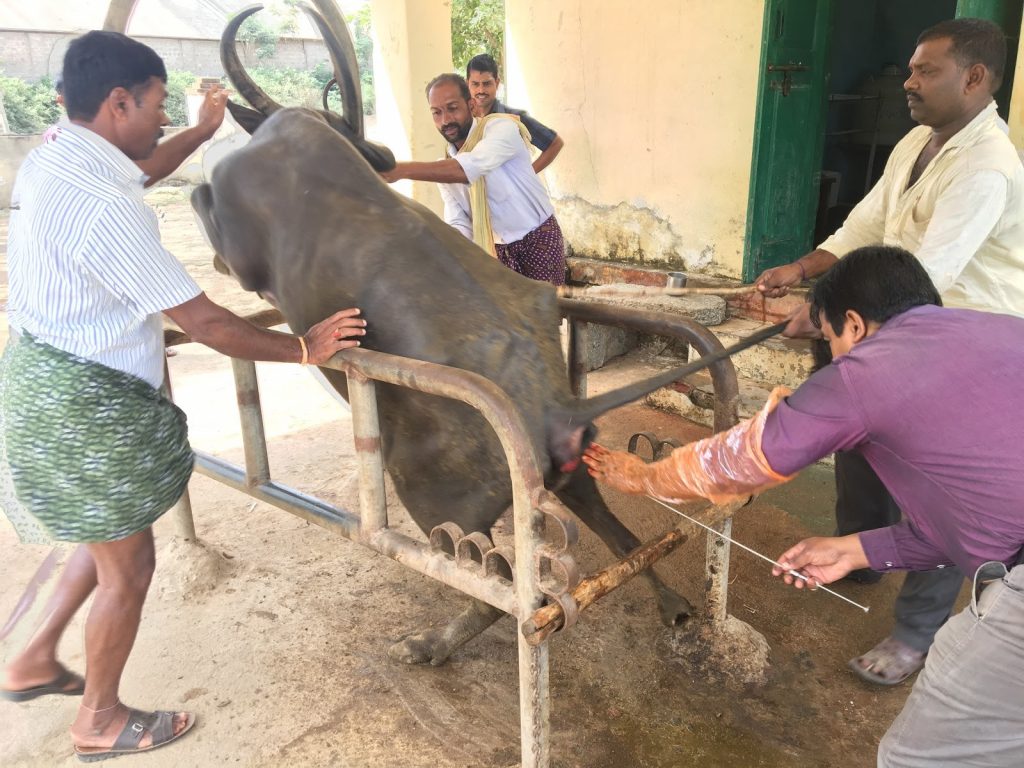
Cows—like all other mammals—produce milk only when they’re nurturing their young. Therefore, to meet the human demand for milk, cows and buffaloes are forcefully inseminated every year. Typically, a cow is both lactating and pregnant for seven months every year and within three months of giving birth, they’re made pregnant again.
Artificial insemination (AI) involves collecting sperm from males, processing and storing it, and artificially introducing it into the female reproductive tract for the purpose of conception. AI guns are almost never sterilised, and the procedure is performed by untrained handlers who often shove their bare, soapy hands into animals’ uteri. This causes cows immense pain and exposes them to potential infections and diseases.
The use of Oxytocin and milk machines
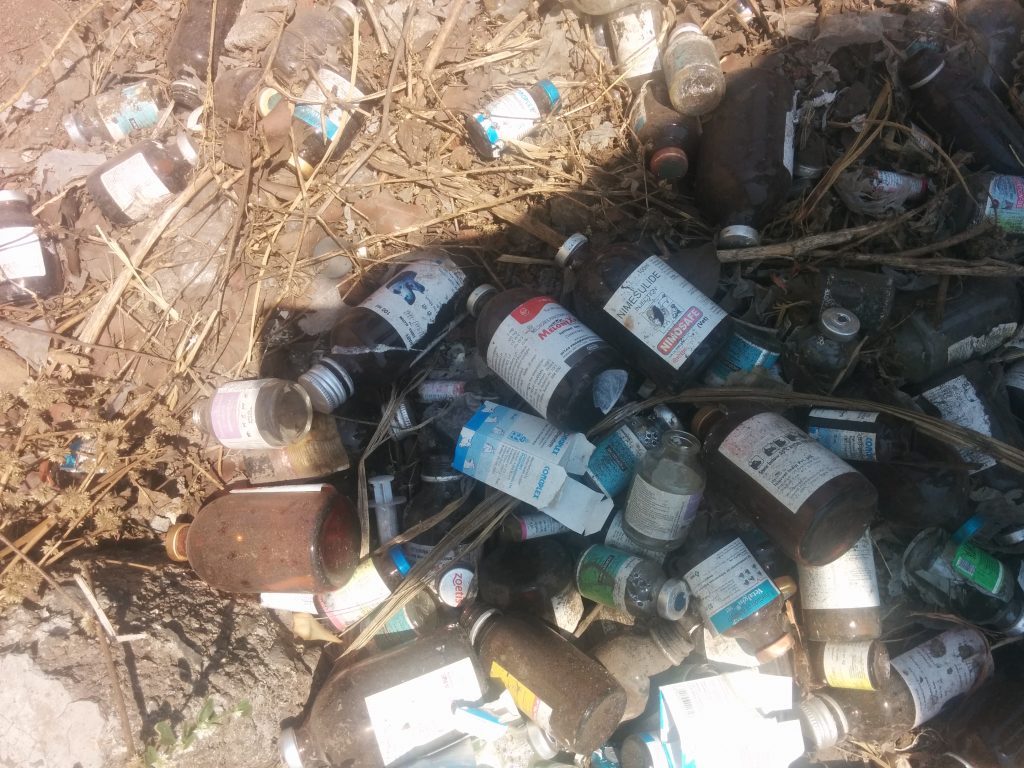
To increase their milk production, cows are given large doses of Oxytocin, a banned schedule H drug, which causes severe labour pains. A survey conducted in Delhi, Haryana, and Uttar Pradesh found that 82% of cattle breeders were using Oxytocin.
It is also becoming a common practice to use milk machines for milking the animals. These machines are rarely sterilised and the unhygienic conditions in the dairies lead to a painful inflammation of the udder, called mastitis. Cows and buffaloes are given antibiotics and painkillers to counter this, which end up in the milk and can cause antibiotic resistance in humans.
Confinement
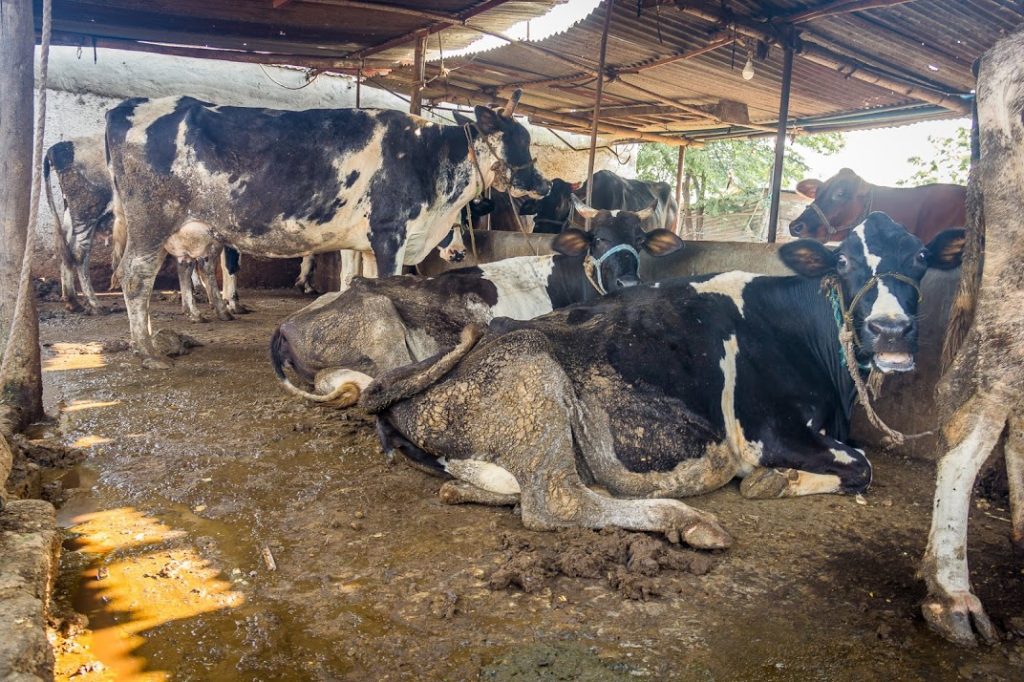
Most cows and buffaloes are confined to tiny rooms that have no sunlight or ventilation. A recent investigative report found that keeping the animals tethered in these makeshift shelters at all times is a common practice at 79% of dairies. The tethers are very short to accommodate as many animals in the small shelters as possible and cause extreme physical discomfort. 60% of dairies also restrain the animals by tying up their hind legs.
Cows and buffaloes are often tethered on hard floors which cause bruises and injuries, and they lay in their own faeces for days.
Male Calves—the forgotten victims
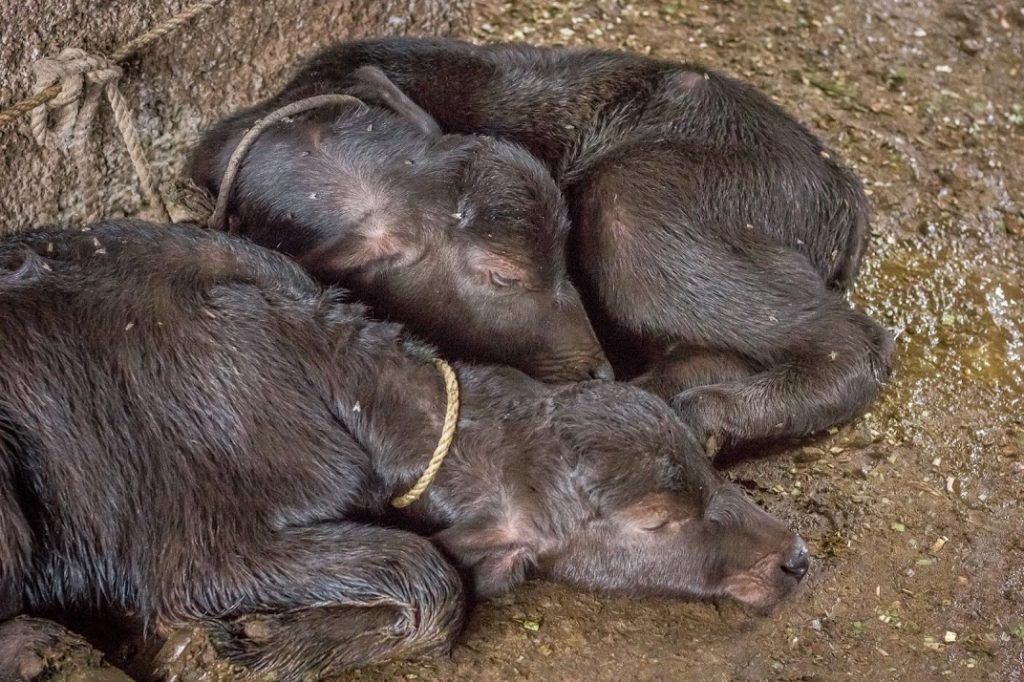
Male calves are useless to the milk industry since they can’t produce milk. They rarely receive proper healthcare and are usually sold to butchers or skinned for their leather. Often, they’re simply abandoned at roadsides and left to die.
An undercover investigator writes: “Male calves are tied up with ropes so short that they cannot lift their heads; in a desperate attempt to reach their mothers, the calves often strangulate themselves to death. Some have their feet tied so they cannot try to go over to their mothers for milk and their mouths are tied shut with ropes so they cannot cry out when they are hungry. These babies are then left to die a slow, agonising death in a corner.”
Beef and Milk—two sides of the same coin
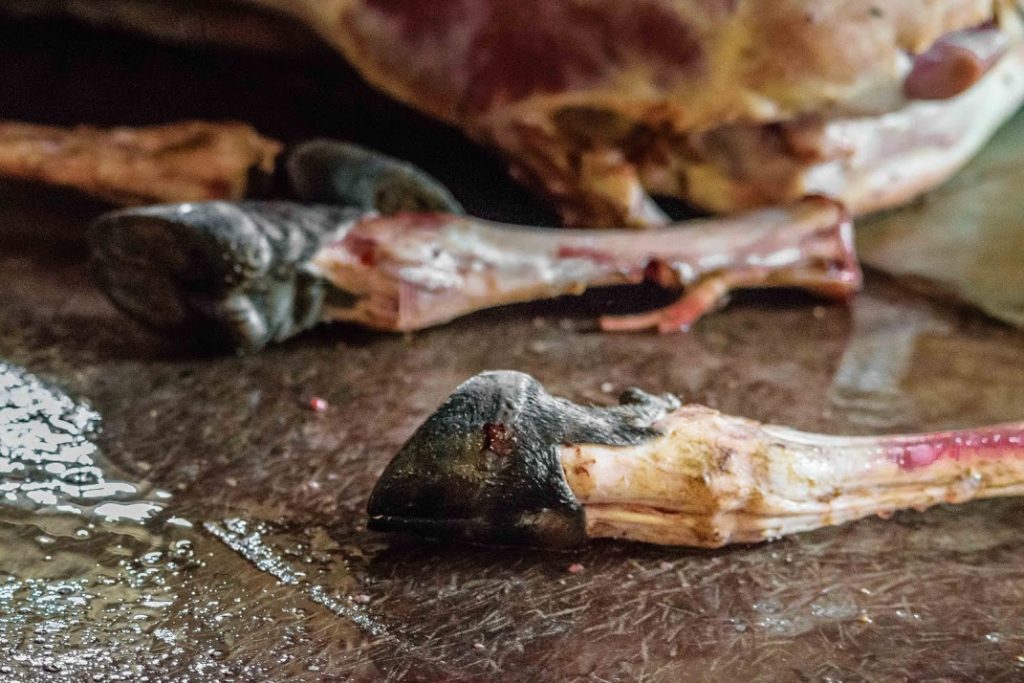
After a life of confinement and abuse, another horror awaits these animals—the journey to the slaughterhouse. “Spent” cows and buffaloes who can no longer produce milk are sent away to slaughter. Since cow slaughter is illegal in some states, these animals are transported by trucks or made to walk for days on end to other states without food, water, or rest.
Ingrid Newkirk, President of PETA, followed one of the caravans of cattle stumbling towards Kerala. “It’s a hideous journey,” she says, “To keep them moving, drivers beat the animal across their hip bones, where there is no fat to cushion the blows. The cows are not allowed to rest or drink. Many cows sink to their knees. Drivers beat them and twist their battered tails to force them to rise. If that doesn’t work they torment the cows into moving by rubbing hot chilli peppers and tobacco into their eyes.”
Instead of receiving the required quick cut with a sharp knife, workers often hack at their throats with dull blades or hit them with hammers in full view of other animals. The natural lifespan of these animals is 25 years, but they’re rarely allowed to live beyond 10 years.
What about small farms and villages?
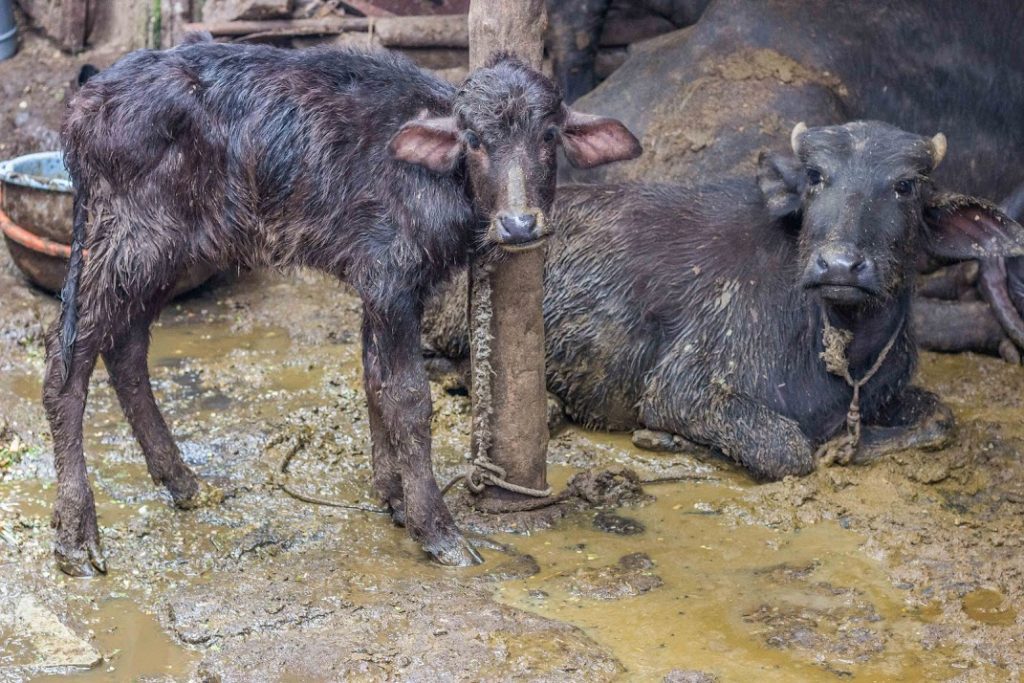
We’re used to images of cows and buffaloes living happily in villages and loved by dairy farmers. While small household farms may offer more freedom than intensive dairy farms, investigators have found that the conditions are not much better.
In a shocking undercover investigation of small-scale dairies, it was found that male calves are killed and their heads are stuffed with straw to create a khalbachha—a dummy calf—which is placed near the mother to ensure that her milk production does not decline due to the anxiety of not seeing her babies.
Illegal practices to increase the milk production like phookan (shoving a stick into the animal’s uterus and twisting it) and doom dev (blowing air into the animal’s private parts) are prevalent on small dairy farms.
1. Inside the Indian Dairy Industry: A Report on the Abuse of Cows and Buffaloes Exploited for Milk, by PETA India
2. Cattle-ogue: Unveiling the Truth of the Indian Dairy Industry, by FIAPO
3. Buffalo calf healthcare in commercial dairy farms: a field study in Uttar Pradesh (India) by R Tiwari, MC Sharma, and BP Singh
4. How India’s sacred cows are beaten, abused, and poisoned to make leather for high street shops, by Peter Popham for Independent
5. The Prevention of Cruelty to Animals Act, 1960